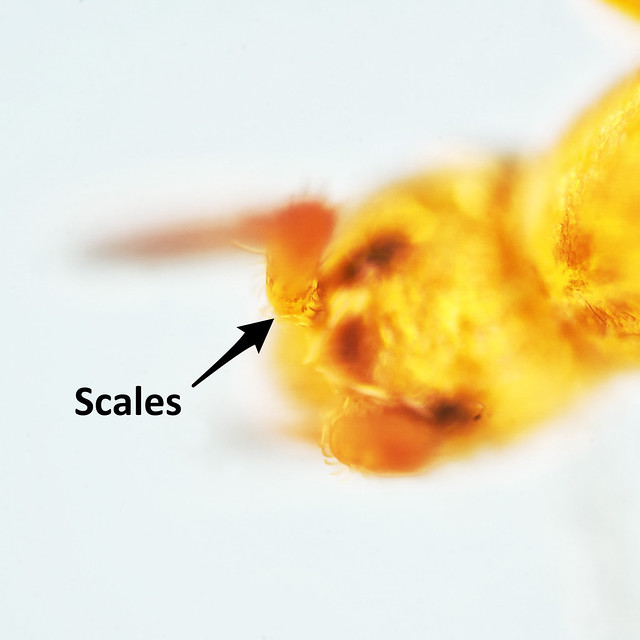Some of the Latin binomial names for springtails are difficult to pronounce, so this is my attempt to make this hurdle easier to get over. In modern usage there is no absolute "correct" way to pronounce Latin words. In classical Latin, there was no soft c, so c's were pronounced as k (hard c). In modern usage, the soft c is more common, even though classical scholars may be offended by this. It's often said that Latin is a living language, and if it is, it has to change with the times. If you disagree with my suggested pronunciations, that's fine (I'm no Latin expert). This guide for the bewildered is only trying to give people a place to start.
Allacma fusca - ah-lack-ma fuss-cah
Campodea fragilis - cam-poe-dee-ah fra-jill-iss
Cyphoderus albinus - sigh-foh-dare-uss al-bin-uss
Deuterosminthurus pallipes - dew-ter-oh-smin-thew-ure-uss pal-lip-ees
Dicyrtoma fusca - dice-toe-ma fuss-cah
Dicyrtomidae - dice-toe-min-id-ay
Dicyrtomina saundersi - dice-toe-me-nah saunders-eye
Entomobrya albocincta - ent-toe-moe-bry-ah albo-sink-tah
Entomobrya intermedia - ent-toe-moe-bry-ah inter-media
Entomobrya multifasciata - ent-toe-moe-bry-ah multi-fass-see-atah
Entomobrya nicoleti - ent-toe-moe-bry-ah nicole-etty
Entomobrya nivalis - ent-toe-moe-bry-ah niv-allis
Entomobryidae - ent-toe-moe-bry-id-ay
Folsomia candida - foll-sow-miah can-did-ah
Heteromurus nitidus - hetero-mure-uss nit-id-uss
Hypogastrura viatica - hypo-gast-true-rah vih-ah-tih-cah
Hypogastruridae - hypo-gast-true-rid-ay
Isotoma viridis - iso-toe-mah vir-id-iss
Isotomidae - iso-toe-mid-ay
Isotomurus palustris - iso-toe-mure-uss pal-uss-tris
Isotomurus plumosus - iso-toe-mure-uss plume-oh-sus
Jordanathrix nr. superba - jordan-ah-thrix superb-ah
Katiannidae - kat-ian-id-ay
Lepidocyrtus lignorum - lep-id-oh-sir-tuss lig-nor-um
Lepidocyrtus violaceus - lep-id-oh-sir-tuss viol-ace-ee-uss
Orchesella cincta - ork-ess-sellah sink-tah
Orchesella villosa - ork-ess-sellah vill-oh-sah
Pogonognathellus flavescens - pogo-noh-nath-ell-uss flav-ess-sens
Pogonognathellus longicornis - pogo-noh-nath-ell-uss long-ghee-corn-iss
Sminthuridae - smin-thee-ure-id-ay
Sminthurides aquaticus - smin-thee-ure-id-ease aq-quat-tee-cuss
Sminthurides malmgreni - smin-thee-ure-id-ease malm-gren-ee
Sminthurinus aureus - smin-thee-ure-id-ease ore-ee-uss
Sminthurus viridis - smin-thee-ure-uss vir-id-iss
Tomoceridae - tom-oh-ser-id-ay
Tomocerus minor - tom-oh-ser-uss
Tomocerus vulgaris - tom-oh-ser-uss vulg-arr-iss
Vertagopus arboreus - verta-goh-pus ar-bore-ee-uss
Vertagopus cinereus - verta-goh-pus sin-err-air-ee-uss


